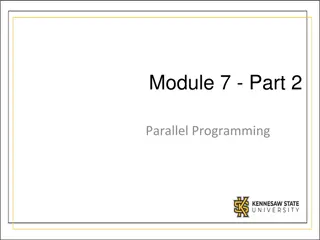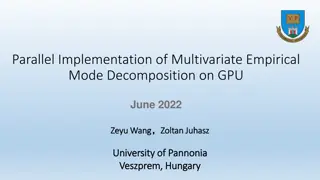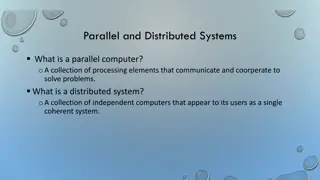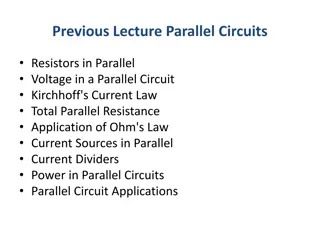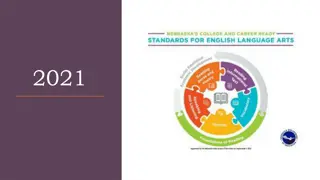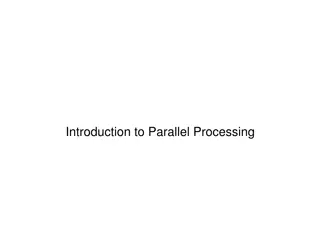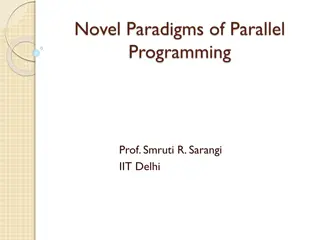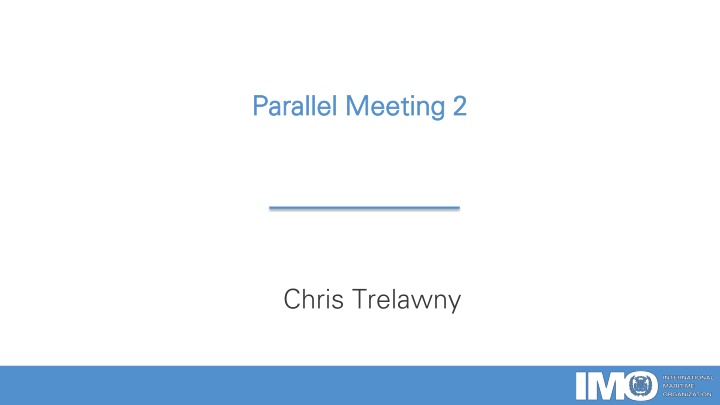
Building Capacity Matrix for Integrated Planning and Development
Explore the capacity building matrix as a valuable tool for partners in planning and development strategies. Discover how it can enhance assistance coordination and support for long-term goals while maintaining sensitivity and privacy concerns.
Download Presentation

Please find below an Image/Link to download the presentation.
The content on the website is provided AS IS for your information and personal use only. It may not be sold, licensed, or shared on other websites without obtaining consent from the author. If you encounter any issues during the download, it is possible that the publisher has removed the file from their server.
You are allowed to download the files provided on this website for personal or commercial use, subject to the condition that they are used lawfully. All files are the property of their respective owners.
The content on the website is provided AS IS for your information and personal use only. It may not be sold, licensed, or shared on other websites without obtaining consent from the author.
E N D
Presentation Transcript
Parallel Meeting 2 Parallel Meeting 2 Chris Trelawny
Capacity Building Matrix The capacity building matrix is an interesting tool for partners Consider holding force generation conferences on a six-monthly basis whereby donors could consider how best to contribute to the capacity building matrix and facilitate a integrated approach For EUNAVFOR Operation Atlanta it is a good tool to implement planning There is a need to conduct a survey of use of the matrix in order to better identify where it can be improved Many activities are planned years ahead. There needs to be a catalogue of training available and training required.
Capacity Building Matrix The information in the capacity building matrix may be sensitive and the requesting state may not wish to advertise its perceived weaknesses. There need to be protocols developed on sharing the information contained in the capacity building matrix. There needs to be a balance between the request for assistance and the ability for friends of DCOC to share this information within their own department and their own development providers. There is a need to determine who has access to the information and to what extent bearing in mind the need to balance greater access against the information sensitivity. There needs to be clarity on who the information can be shared with. 18/03/2025 3
Capacity Building Matrix The matrix should be used to deconflict capacity building activities between assistance providers. The capacity building matrix should be treated in a similar manner to general operational training planning, using a similar methodology to that currently being used to develop the regional maritime security strategy. The matrix is too general and needs some standardisation. Needs should be categorised into: Information sharing Capability development / capability enhancement Capacity building Operational coordination [Public messaging] 18/03/2025 4
Capacity Building Matrix Many development partners conduct missions to determine needs. The matrix could be used as a basis to show the results of these needs assessment missions in order to baseline requirements and avoid repeated visits by other development partners that put an additional strain on signatory states. The matrix should not be a substitute for the relationship between the donor and the assistance provider. The matrix should be used as a basis for requests for assistance. The matrix should be a live document and be constantly updated. Although requests are generally clear it is recommended to break the information down into pillars of categories of assistance and to be more specific, for example the type of training required, infrastructure requirements, operational coordination requirements and so on. Countries can decide whether to fund or support individual activities. 18/03/2025 5
Capacity Building Matrix There was discussion as to whether to highlight when action has been completed, to decide whether the action completed should be detailed in the matrix so that other countries can see what's being done, or whether once the action is completed the request should be deleted. The matrix does not replace bilateral information sharing. The existence of the matrix is an achievement in itself. There is a need to anticipate courses of action and conduct gap analysis to determine if the action taken is matching the requirement. In this regard the development of KPIs and an evaluation process is useful, perhaps by Working Group 2. 18/03/2025 6
Capacity Building Matrix There should be a column for development partners to indicate whether they are interested to assist. There could be a way to frame official requests indicating choice of country to whom the request is directed because many requests will be done on the basis of a bilateral formal request rather than identification of the need in the matrix itself. 18/03/2025 7
Capability and Capacity Building In addressing capability and capacity building the signatory States should take the lead with external supporters providing support. UNODC expressed interest in participating in developing doctrine for a potential sub working group on pathways to prosecution agreements and processes. There was discussion on whether the legal finish should form part of the work of working Group 3 if it is convened or whether it should be a stand-alone working group for lawyers. Denmark indicated that working Group 3 was very important and that Denmark would participate however, it is very important that working Group 3 is led by regional countries and that regional navies should take the lead in maritime operations where possible. EUNAVFOR and CMF are prepared to partner in this and cautioned against reinventing the wheel. 18/03/2025 8
Capability and Capacity Building South Africa indicated that their participation in joint maritime operations would depend on the availability of platforms and the necessary diplomatic clearances from government but we're willing to support the principle. UNODC discussed infrastructure programmes including the US funded national maritime operations centre in Dar es Salaam co-located in the regional search and rescue centre, which included a conference room for crisis management and a training room. UNODC has initiated a similar project in Maputo and Pemba due to be completed in the first quarter 2025. 18/03/2025 9
Capability and Capacity Building UNODC capacity building programmes include two 4-month blocks per year with the information currently shared by e-mail but which could be included in the matrix. UNODC supported the concept of working Group 3 and the need for a mechanism leading to action. This should include the development of doctrine for standing up a joint task force with an incident command structure and a coordinator. Participation from other navies and organisations should be invited. 18/03/2025 10
Capability and Capacity Building India stated that training is part of capability enhancement. India is prepared to host the next information sharing workshop which will end with a tabletop exercise an exercise on using the system and could complement CRIMARIO activities. DC OC states should offer the scenarios so that CRIMARION and India can deconflict their programmes. India is engaged in setting up of NMISCs as part of capability development and provide support to states with a focus on capability. Capacity building programmes include infrastructure, assets and support. Operational coordination as envisaged in Working Group 3 will not be possible until information sharing is effective and information sharing should be part of operational requirements. 18/03/2025 11
Capability and Capacity Building Indian Ocean Commission stated that it should be kept in the loop with regard to port security and they were engaged in EU Port Security Programme on ISPS Code, governance, threat mitigation and risk registers. This port security programme extends until April 2026. The Red Sea project is due to end in 2026 but is ongoing in all target countries in terms of PFSO training, assessment of port security compliance, providing port security briefs and treating ports as critical infrastructure. CRIMARIO II ends in July 2025 with CRIMARIO III commencing in September 2025. CRIMARIO II is contributing to DCOC exercise programmes and is open to other partners to join. CRIMARIO III could operate could participate in working group 3 planning. 18/03/2025 12
Capability and Capacity Building Legal Finish European Union expressed the need for a legal finish both for prosecutions under national law but also in respect of suspects handed over for prosecution under other jurisdictions. UNODC considered the need to establish a separate working group on legal finish but that this should overlap with operational considerations. They also noted that drug trafficking has its own challenges. UNODC has a programme on extra territorial application of the law project in the Seychelles and programmes on assessment of national legal programmes under MASE and the Port Security Programme. These would develop a list of recommendations that could be shared with DCOC States. UNODC proposed developing sentencing guidelines and could work with DCOC countries within the Safe Seas for Africa project. 18/03/2025 13
Capability and Capacity Building Legal Finish UNODC is also developing a joint investigation approach with Interpol and is happy to collaborate with the DCOC in this regard. CRIMARIO noted that they were looking into ports in Latin America with respect to drug trafficking and other criminal activity and could share the outputs from that with the working group on port security. They could also join UNODC on the marine domain awareness programme. India indicated that legal finish is part of operational capability. They noted that the G7++ FOGG appears to be a bit ahead on the legal finish and DCOC could learn lessons from West Africa in this regard. India has developed national legislation including a counter piracy law and can provide assistance including on harmonisation of legislation and the handover of pirates from 1 country to another. 18/03/2025 14
Famous dead guy quote Harry S Truman It is amazing what you can accomplish if you do not care who gets the credit.
Questions? 18/03/2025 16
Thank you. International Maritime Organization International Maritime Organization 4 Albert Embankment London SE1 7SR United Kingdom Tel: +44 (0)20 7735 7611 Fax: +44 (0)20 7587 3210 Email: info@imo.org info@imo.org info@imo.org IMO website: www.imo.org www.imo.org www.imo.org uk.linkedin.com/company/international-maritime-organization uk.linkedin.com/company/international-maritime-organization uk.linkedin.com/c ompany/internatio nal-maritime- organization instagram.com/imo_hq/ instagram.com/imo_hq/ instagram.com /imo_hq/ facebook.com/IMOHQ/ facebook.com/IMOHQ/ facebook.com/ IMOHQ/ youtube.com/imohq youtube.com/imohq youtube.com /imohq x.com/IMOHQ x.com/IMOHQ x.com/IMOHQ flickr.com/photos/ imo-un imo-un flickr.com/photos/ imo-un flickr.com/photos/ uk.linkedin.com/company/international-maritime-organization uk.linkedin.com/company/international-maritime-organization instagram.com/imo_hq/ instagram.com/imo_hq/ facebook.com/IMOHQ/ facebook.com/IMOHQ/ youtube.com/imohq youtube.com/imohq flickr.com/photos/ flickr.com/photos/ imo-un imo-un uk.linkedin.com/company/international-maritime-organization uk.linkedin.com/company/international-maritime-organization uk.linkedin.com/company/international-maritime-organization uk.linkedin.com/company/international-maritime-organization 18/03/2025 17

